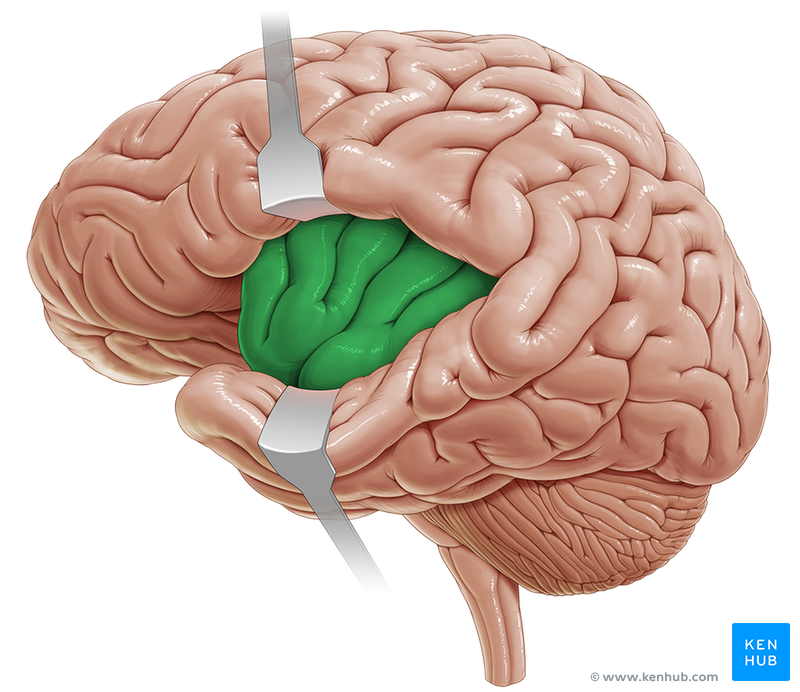Answer: The insula, or insular cortex, is a part of the cerebral cortex that is beneath the lateral sulcus.
Located underneath the outer surface of the brain’s cortex is a structure called the insular cortex, or the insula. Some believe that the insula is a unique part of the telencephalon, while others suggest that it belongs to the temporal lobe. Still others classify it more with the limbic brain regions alongside structures such as the hippocampus and amygdala.
Function of the insula
The insula itself is important for such varied roles as emotion, homeostasis regulation, and interoception (the ability to sense the status of the body’s internal condition).
Parts of the insula increase in activity when assessing the intensity of a painful stimulus. For example, in one study published in 2009, patients were put into an fMRI scanner as a noxious heat stimulus was applied to their back. They were asked to use a finger width scale to rate how painful the heat was. In doing this task, it was discovered that blood flow to insular cortex of both hemispheres was increased, suggesting that neural processing in the insula is important for assessing the intensity of pain. (Parsing Pain Perception Between Nociceptive Representation and Magnitude Estimation)
Insula, particularly the right anterior insula is important for interception, the sense of self. The insular cortex helps a person accurately gauge their own heartbeat, for example. Those with a larger volume of gray matter in the insular cortex have a better accuracy with gauging the internal state of their body (Neural systems supporting interoceptive awareness).
Signaling within the insular cortex is important for visceroception, the ability to sense the state of their visceral organs (heart, lungs, bladder, for example). More specifically, it was found that people with irritable bowel syndrome (IBS) experience aberrant signaling within insula that may contribute to their perception of pain within their enteric nervous system (Cortical effects of anticipation and endogenous modulation of visceral pain assessed by functional brain MRI in irritable bowel syndrome patients and healthy controls).
Connections of the insula
The insula is considered a hub cortex area, since many projections run through this area. Other cortical areas, such as parietal cortex, orbitofrontal cortex, and anterior cingulate cortex all receive innervation from the insula. Basal ganglia and hippocampus also receive connections from insula.
The insula receives strong connections from the amygdala. This projection is reciprocal, meaning the insula projects back into the amygdala. Insular cortex also gets inputs from the thalamus.
Posterior insula gets reciprocal connections from the somatosensory cortex. This accounts for why the insula is such a major player in pain sensation and assessment.
Damage to the insula
The insula receives circulation from the middle cerebral artery (MCA). The MCA is one of the more clinically significant arteries because of the frequency of stroke that affects the MCA and consequently the insular cortex.
Injury to the insula can lead to several consequences, ranging from an inability to sense the internal state, autonomic dysfunction, and mood changes. When the left insular cortex is injured, there is a possibility of a loss of language. Considering how many connections are formed between the insular cortex and other brain structures, it makes sense that insular damage causes so many deficits.
However, because of the remarkable plastic capacity of the brain, it is possible to recover from a stroke (depending on several factors, including severity of injury).
